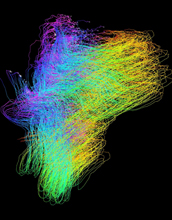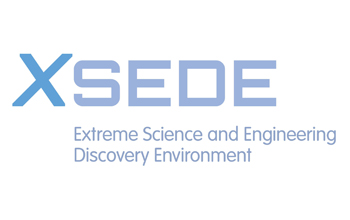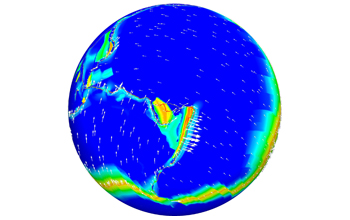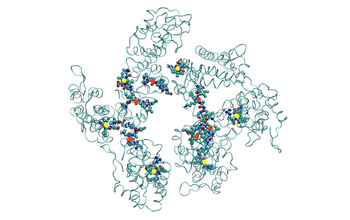All Images
News Release 11-152
XSEDE Project Brings Advanced Cyberinfrastructure, Digital Services and Expertise to Nation's Scientists and Engineers
NSF to support the most advanced, powerful and robust collection of integrated advanced digital resources and services in the world
This material is available primarily for archival purposes. Telephone numbers or other contact information may be out of date; please see current contact information at media contacts.

XSEDE resources will enhance advanced computational abilities to use track and mitigate the effects of a disaster. When the blowout of the British Petroleum (BP) Macondo well destroyed the Deepwater Horizon oil rig in the Gulf of Mexico on April 20, 2010, it touched off the largest environmental disaster in U.S. history, leading to a full-scale effort to stop the leak, assess the full scope of the damage, and take steps to minimize further harm. At universities across the nation, researchers used advanced cyberinfrastructure available through the Texas Advanced Computing Center (TACC) and Louisiana Optical Network Initiative (LONI), both TeraGrid resource providers, to help inform the response effort and forecast the oil spill's impact throughout the Gulf Coast region. This is an immersive (3-D made from 2-D) simulation of oil flow through water, based on computational fluid dynamics simulations. The "ribbons" show the particles; color and thickness indicate movement. XSEDE will enable greater discovery and learning to address future environmental challenges.
Credit: Marcel Ritter, Jian Tao, Haihong Zhao, LSU Center for Computation and Technology
Download the high-resolution JPG version of the image. (1 MB)
Use your mouse to right-click (Mac users may need to Ctrl-click) the link above and choose the option that will save the file or target to your computer.

Extreme Science and Engineering Discovery Environment (XSEDE).
Credit: XSEDE
Download the high-resolution JPG version of the image. (88 KB)
Use your mouse to right-click (Mac users may need to Ctrl-click) the link above and choose the option that will save the file or target to your computer.

View a video interview with John Towns, leader of the National Science Foundation's new Extreme Science and Engineering Discovery Environment (XSEDE) project, talking about the vision for XSEDE and how it will build on the TeraGrid. XSEDE is a follow-on project to the TeraGrid, an 11-year project, providing access primarily to high-performance computing (HPC) resources and services. The XSEDE project will expand that set of services to encompass much more than just HPC. XSEDE allows research scientists open access to the power of supercomputers, advanced computational tools, as well as digital resources and services.
Credit: Copyright 2011, Board of Trustees, University of Illinois

TeraGrid simulations map the movement of the Earth's mantle for greater insight into earthquakes. Tectonic plate motion is represented by arrows, with viscosity arising from global mantle flow simulation. Plate boundaries, which can be seen as narrow red lines above insert are resolved using an adaptively refined mesh with 1km local resolution. Shown are the Pacific and the Australian tectonic plates and the New Hebrides and Tonga microplates. XSEDE will enable the same kind of work, but will provide greater precision, more detail, and new knowledge.
Credit: Georg Stadler, Institute for Computational Engineering & Sciences, The University of Texas at Austin
Download the high-resolution JPG version of the image. (371 KB)
Use your mouse to right-click (Mac users may need to Ctrl-click) the link above and choose the option that will save the file or target to your computer.

Supercomputer Sheds Light on HIV's Behavior. XSEDE will expand on the new research TeraGrid resources opened to battle this global disease. All-atom simulation of six Gag polypeptide CA domains arranged in a hexagonal structure, important to the protein's overall stability in the immature virion. Red and yellow dots indicate residues important for stabilizing the hexagonal arrangement.
Credit: Courtesy: Gregory A. Voth, University of Chicago
Download the high-resolution JPG version of the image. (150 KB)
Use your mouse to right-click (Mac users may need to Ctrl-click) the link above and choose the option that will save the file or target to your computer.


